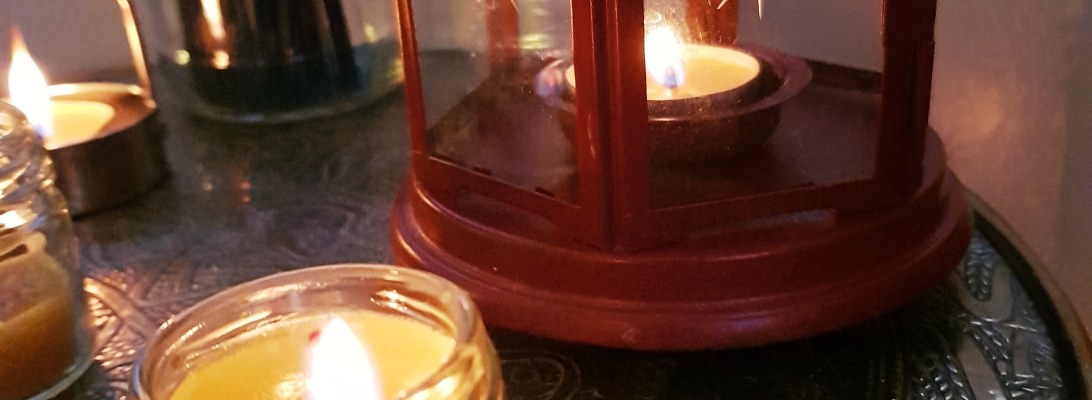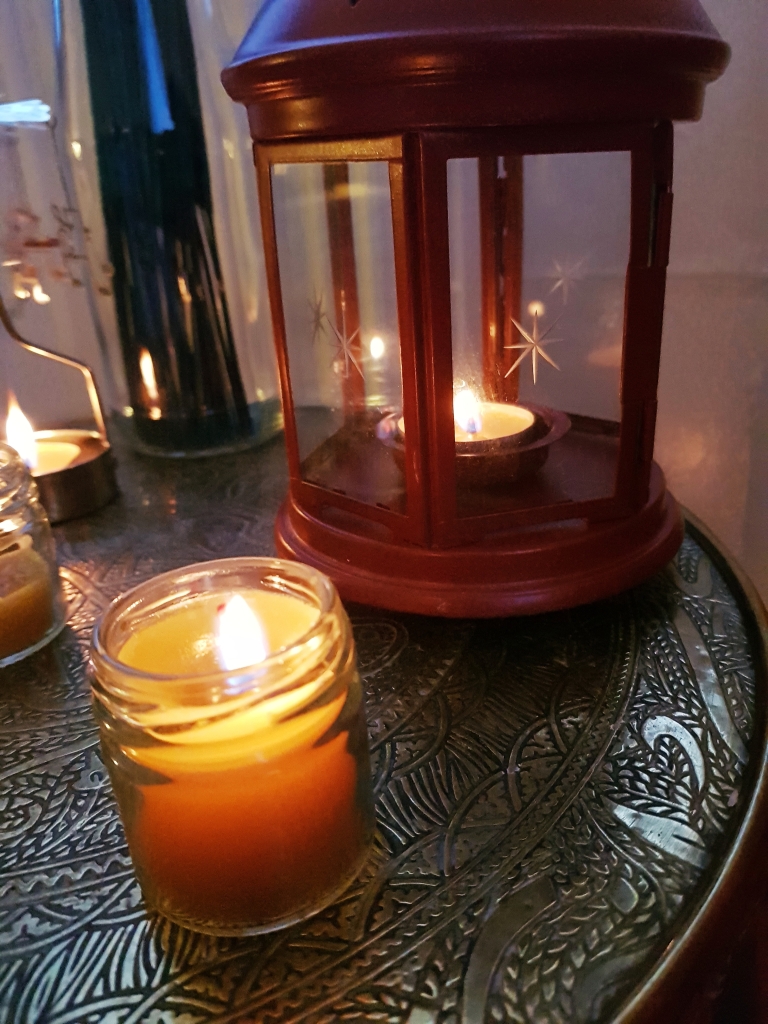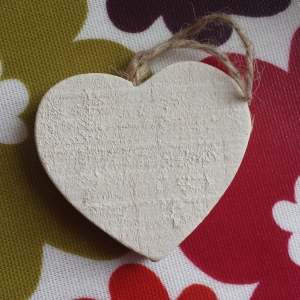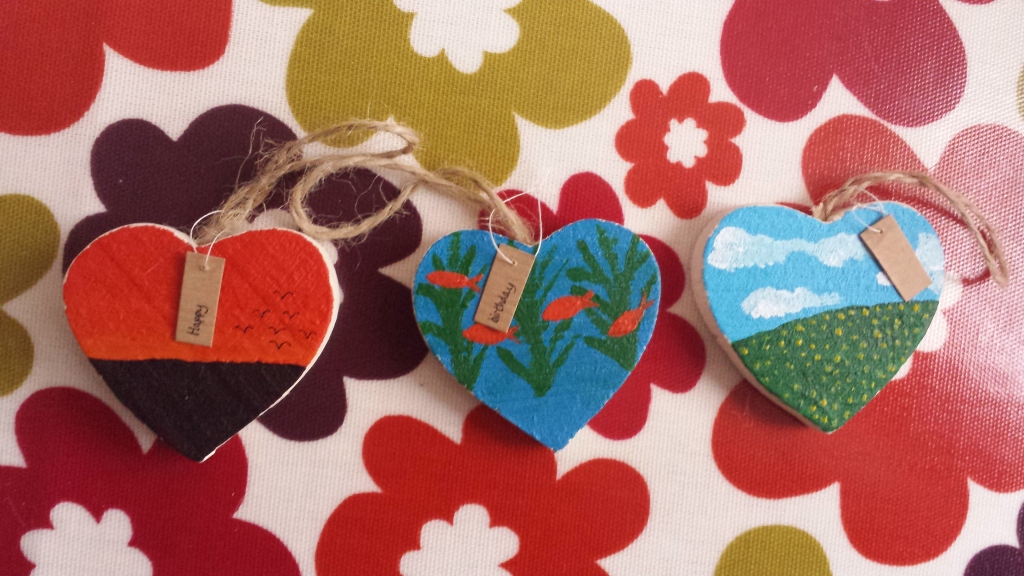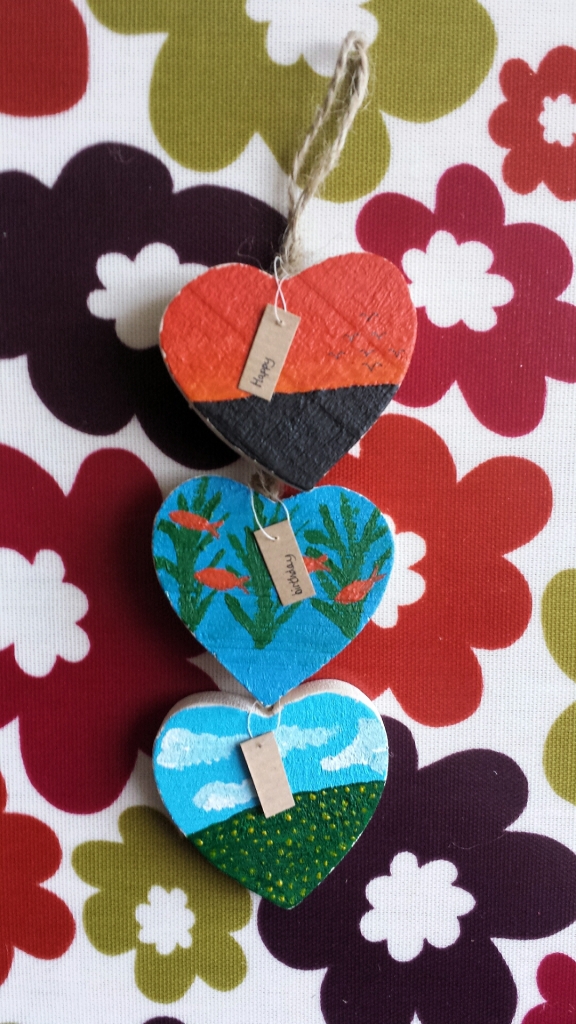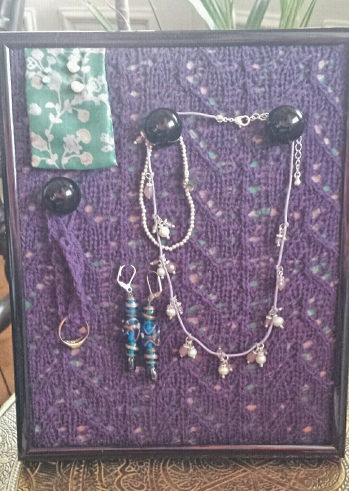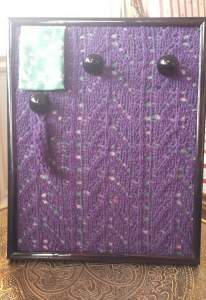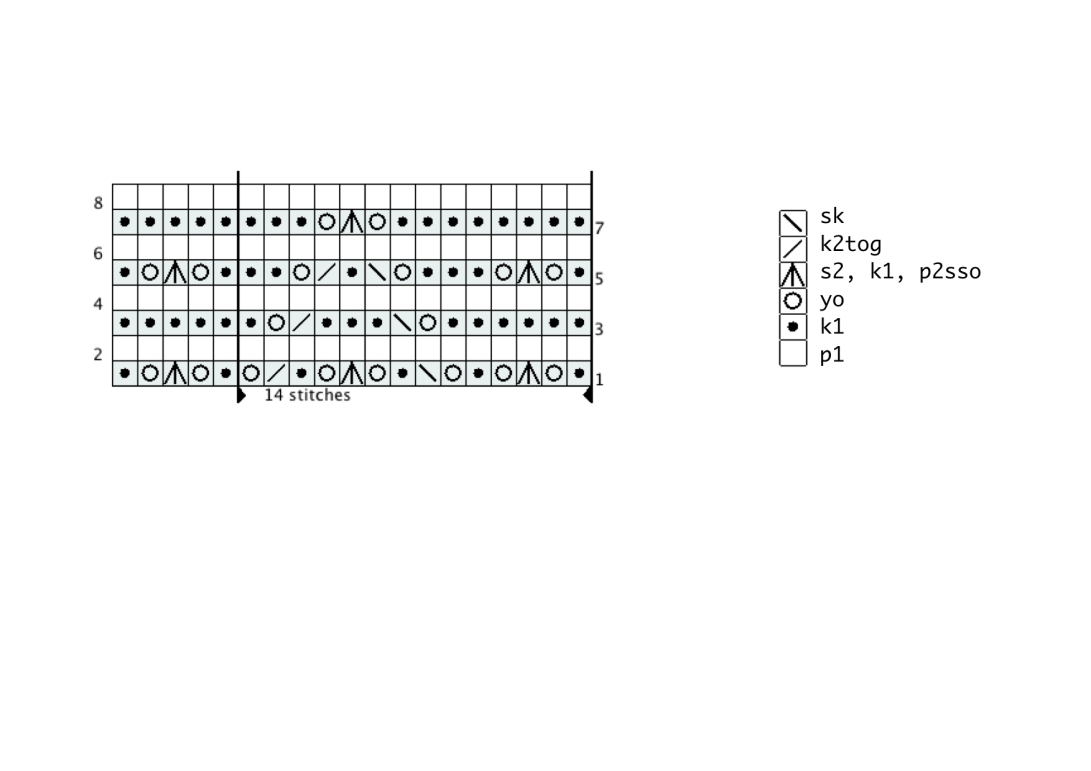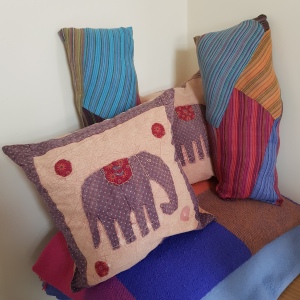
In the days before I really thought things through, I bought some cheap synthetic pillows for the spare bed. I no longer have a spare bed, so these pillows were extra to my needs. The labels said they were machine washable, so I figured I’d give them a wash and donate them to a charity shop. Unfortunately they went horribly lumpy and were left in a state that wasn’t really decent enough to donate. I could have just done it anyway, but then couldn’t be sure they’d be welcome and not just end up in landfill. I rang animal shelters to ask if they had any use for them for bedding, but alas they did not.
Meanwhile, I had some cushion inners from my student days that were disintegrating and making a horrible mess. I dread to think what they were made of, but it wasn’t natural. I hadn’t really any choice but to responsibly dispose of them (knowing that at least they wouldn’t go to landfill because my local council incinerates rubbish – not ideal at all, but at least energy is produced from it). But now I had empty cushion covers.
I also had an annoying situation with my bed frame being slightly longer than my mattress, and finding that a gap kept appearing and swallowing my pillow in the middle of the night.
And I had a beautiful skirt that had ripped but didn’t really fit well enough to justify mending. I loved the fabric and kept it for a future project.
What if all of these situations could come together for one big solution? I cut down the misshapen pillows (and rearranged the stuffing in the process!) to make new cushion inners. And I used some of the skirt fabric and the left over pillow stuffing to make extra cushions to put at the bottom of my mattress to stop it from moving. The skirt was a weird shape so they were never going to be straight, but they’re not going to be seen so it doesn’t really matter.
It’s a long story and it isn’t even a mildly interesting one. But what this long-winded story does show is how our poor decisions as consumers don’t go away. I haven’t solved the problem, really. I have just delayed some synthetic materials from polluting the environment, whilst also fixing some minor comfort issues. I won’t personally ever send them to the tip, but I won’t be on this earth forever and I can’t take responsibility for them beyond my lifespan. It’s alright that we have made poor decisions out of ignorance, as long as we don’t repeat the behaviour. But is it alright that these products are still being manufactured when sustainable alternatives are available?


